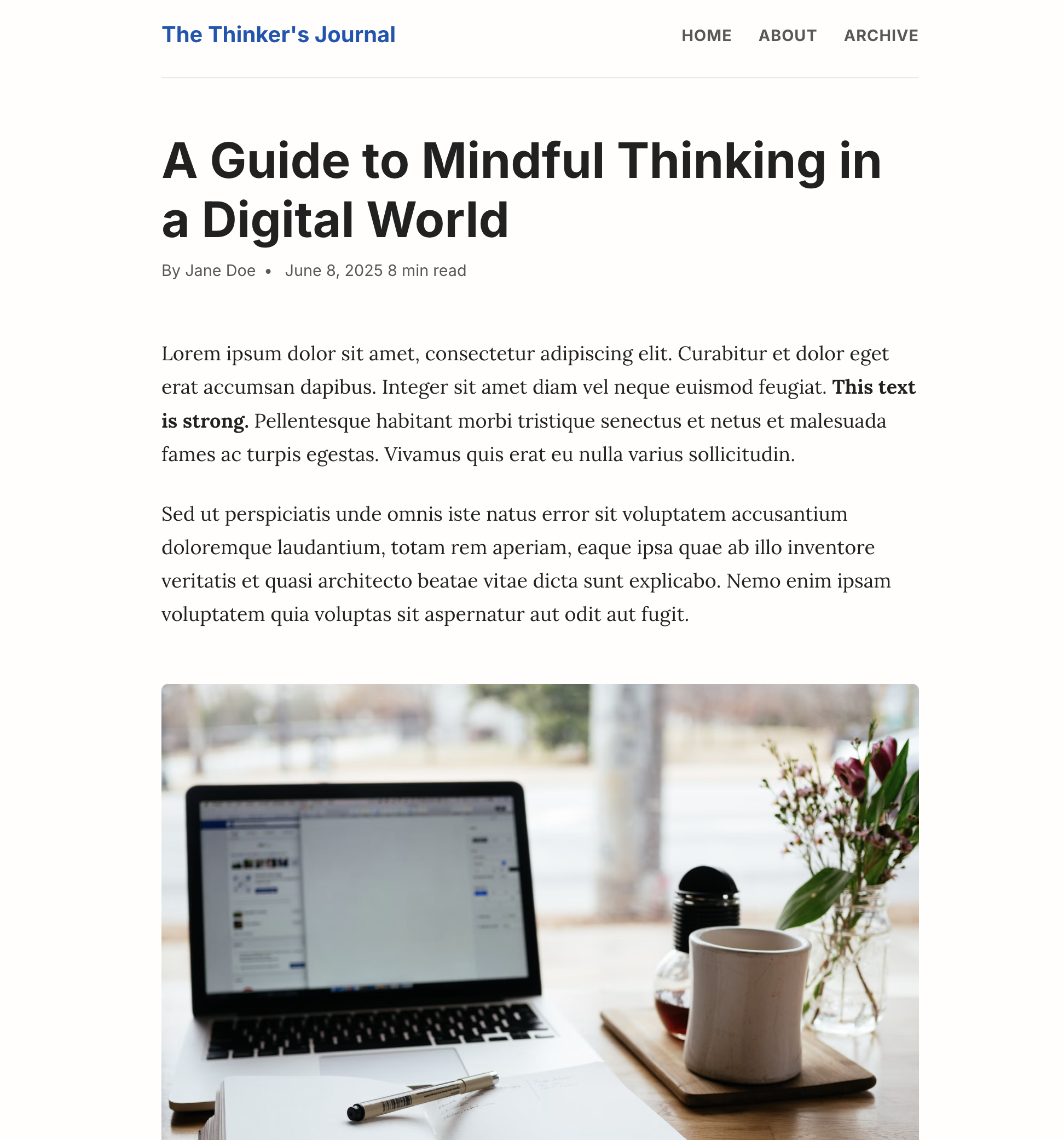AI Prompt for a Personal Blog
Create a website for a personal blog from this AI prompt template.
You can enter the following prompt into a Large Language Model (LLM) such as ChatGPT, Claude, or Gemini to create a personal blog type website. The prompt is quite specific, which helps nudge the AI to a result that's likely what you're looking for. Feel free to tweak it as you please.
The Prompt:
Generate a complete HTML template for a personal blog with a minimalist and content-focused design. The typography should be excellent and highly readable.
Page Structure (for a single article page):
- Header: A minimal header containing only the blog's title (e.g., "The Thinker's Journal") and a simple navigation menu with links like "Home," "About," and "Archive."
- Article Header: Inside the main content area, a header for the article itself, containing the article title (
<h1>), author's name, publication date, and estimated reading time.- Article Body: A single, centered column with a comfortable line width for reading. Use placeholder text for paragraphs, blockquotes, code snippets, and an image with a caption. Ensure typography is well-handled (e.g.,
font-size,line-height).- Article Footer: A section at the end of the article for social sharing buttons (placeholder icons) and tags.
- Author Bio: A small section below the article with the author's photo, name, and a short bio.
- Footer: A simple, unobtrusive footer with a copyright notice.
Core Requirements:
- Technology: Single HTML file with CSS in a
<style>tag.- Accessibility: WCAG 2.1 AA compliant. Pay close attention to typographic contrast and scale. Semantic tags like
<article>,<aside>, and<time>should be used.- Responsiveness: The layout must be perfectly responsive. The main content column's width should be fluid but have a
max-widthfor readability on large screens.- Best Practices: The CSS should define a clear and readable typography system using a serif font for body text and a sans-serif font for headings. Use CSS variables for fonts, sizes, and colors. The code should be exceptionally clean and well-commented.
The Result
When I ran the above prompt against Google Gemini Pro 2.5, I got the following result:

How to Use The Prompt
- Copy the entire prompt text.
- Paste it into your preferred LLM (e.g., ChatGPT, Claude, Gemini, etc).
- Review the generated code. You can ask the LLM for modifications, like changing colors or fonts, by replying with follow-up instructions.
The prompt includes a Core Requirements section that instructs the LLM to focus on quality, accessibility, and responsive design, ensuring you get a professional-grade starting point.
Be sure to check the prompt carefully for anything you want to change first. You can also use it as a template starter for future projects.